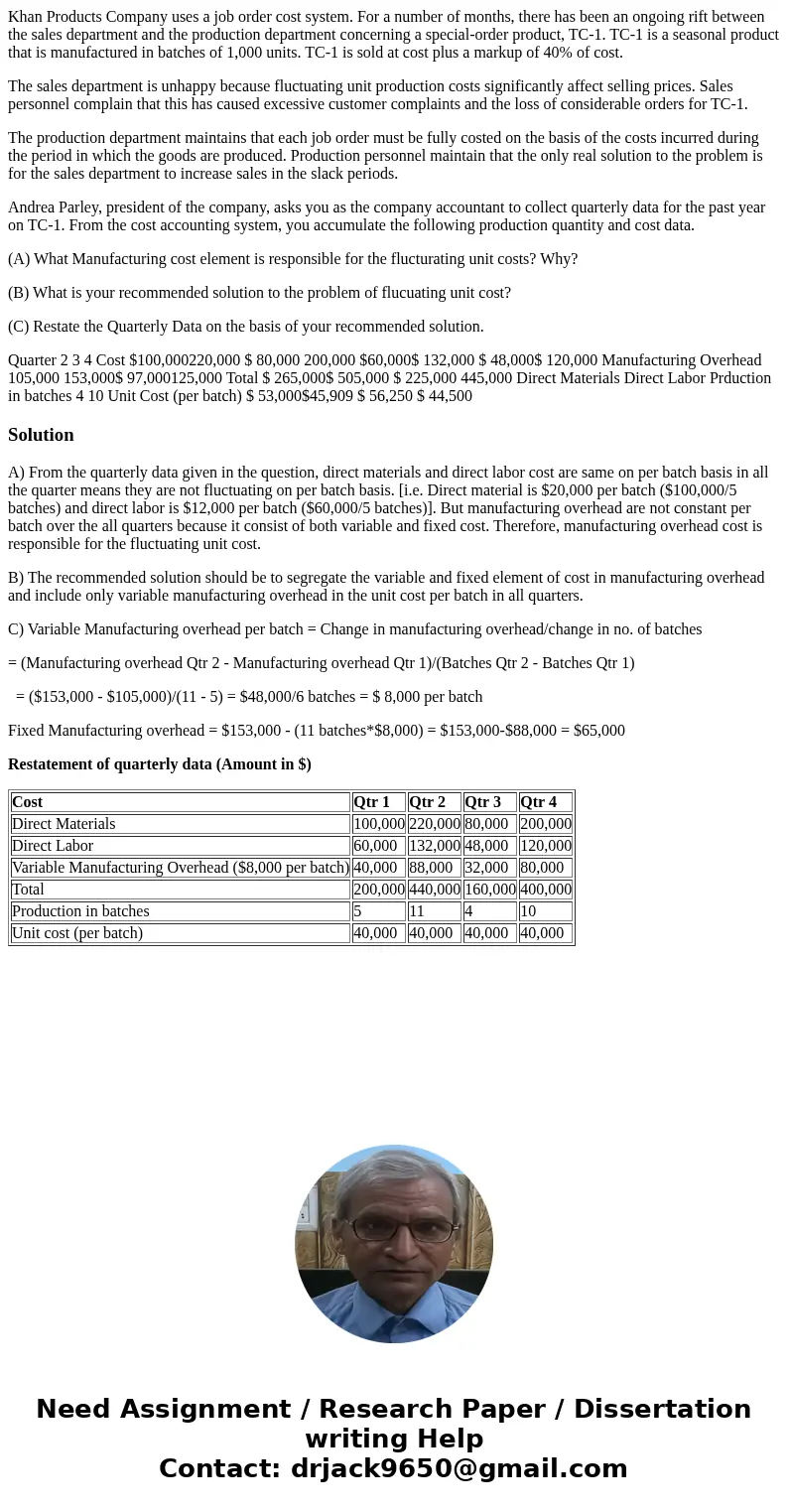Khan Products Company uses a job order cost system For a num
Khan Products Company uses a job order cost system. For a number of months, there has been an ongoing rift between the sales department and the production department concerning a special-order product, TC-1. TC-1 is a seasonal product that is manufactured in batches of 1,000 units. TC-1 is sold at cost plus a markup of 40% of cost.
The sales department is unhappy because fluctuating unit production costs significantly affect selling prices. Sales personnel complain that this has caused excessive customer complaints and the loss of considerable orders for TC-1.
The production department maintains that each job order must be fully costed on the basis of the costs incurred during the period in which the goods are produced. Production personnel maintain that the only real solution to the problem is for the sales department to increase sales in the slack periods.
Andrea Parley, president of the company, asks you as the company accountant to collect quarterly data for the past year on TC-1. From the cost accounting system, you accumulate the following production quantity and cost data.
(A) What Manufacturing cost element is responsible for the flucturating unit costs? Why?
(B) What is your recommended solution to the problem of flucuating unit cost?
(C) Restate the Quarterly Data on the basis of your recommended solution.
Quarter 2 3 4 Cost $100,000220,000 $ 80,000 200,000 $60,000$ 132,000 $ 48,000$ 120,000 Manufacturing Overhead 105,000 153,000$ 97,000125,000 Total $ 265,000$ 505,000 $ 225,000 445,000 Direct Materials Direct Labor Prduction in batches 4 10 Unit Cost (per batch) $ 53,000$45,909 $ 56,250 $ 44,500Solution
A) From the quarterly data given in the question, direct materials and direct labor cost are same on per batch basis in all the quarter means they are not fluctuating on per batch basis. [i.e. Direct material is $20,000 per batch ($100,000/5 batches) and direct labor is $12,000 per batch ($60,000/5 batches)]. But manufacturing overhead are not constant per batch over the all quarters because it consist of both variable and fixed cost. Therefore, manufacturing overhead cost is responsible for the fluctuating unit cost.
B) The recommended solution should be to segregate the variable and fixed element of cost in manufacturing overhead and include only variable manufacturing overhead in the unit cost per batch in all quarters.
C) Variable Manufacturing overhead per batch = Change in manufacturing overhead/change in no. of batches
= (Manufacturing overhead Qtr 2 - Manufacturing overhead Qtr 1)/(Batches Qtr 2 - Batches Qtr 1)
= ($153,000 - $105,000)/(11 - 5) = $48,000/6 batches = $ 8,000 per batch
Fixed Manufacturing overhead = $153,000 - (11 batches*$8,000) = $153,000-$88,000 = $65,000
Restatement of quarterly data (Amount in $)
| Cost | Qtr 1 | Qtr 2 | Qtr 3 | Qtr 4 |
| Direct Materials | 100,000 | 220,000 | 80,000 | 200,000 |
| Direct Labor | 60,000 | 132,000 | 48,000 | 120,000 |
| Variable Manufacturing Overhead ($8,000 per batch) | 40,000 | 88,000 | 32,000 | 80,000 |
| Total | 200,000 | 440,000 | 160,000 | 400,000 |
| Production in batches | 5 | 11 | 4 | 10 |
| Unit cost (per batch) | 40,000 | 40,000 | 40,000 | 40,000 |

 Homework Sourse
Homework Sourse